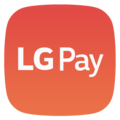 | |
| Developer(s) | LG Electronics |
|---|---|
| Initial release | June 2, 2017 |
| Operating system | Android |
| Platform | Selected LG G series & LG V series smartphones |
| License | Proprietary |
| Website | www |

LG Pay was a mobile payment and digital wallet service by LG Electronics that let users make payments using compatible phones. The service supported contactless payments using near-field communication (NFC), and also incorporated wireless magnetic communication that allowed contactless payments to be used on payment terminals that only supported magnetic stripe transactions. [1]
Contents
LG Pay was discontinued in the United States on 1 November 2021, [2] and in South Korea, the service was discontinued on 30 July 2024. [3]